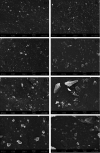Preparation of Natural Rubber Composites with High Silica Contents Using a Wet Mixing Process
- PMID: 35309431
- PMCID: PMC8928548
- DOI: 10.1021/acsomega.1c05848
Preparation of Natural Rubber Composites with High Silica Contents Using a Wet Mixing Process
Abstract
A wet mixing process is proposed for filled rubber composites with a high silica loading to overcome the drawbacks of high energy consumption and workplace contamination of the conventional dry mixing process. Ball milling was adopted for preparing the silica dispersion because it has a simple structure, is easy to operate, and is a low-cost process that can be easily scaled up for industrial production. The response surface methodology was used to optimize the making of the silica dispersion. The optimum conditions for a well-dispersed silica suspension with the smallest silica particle size of 4.9 mm were an about 22% silica content and 62 h of ball milling. The effects of dry and wet mixing methods on the properties of silica-filled rubber composites were investigated in a broad range of silica levels from low to high loadings. The mixing method choice had little impact on the properties of rubber composites with low silica loadings. The silica-filled rubber demonstrated in this study, however, shows superior characteristics over the rubber composite prepared with conventional dry mixing, particularly with high silica loadings. When compared to silica-filled natural rubbers prepared by dry mixing (dry silica rubber, DSR), the wet mixing (for WSR) produced smaller silica aggregates with better dispersion. Due to the shorter heat history, the WSR exhibits superior curing characteristics such as a longer scorch time (2.2-3.3 min for WSR and 1.0-2.1 min for DSR) and curing time (4.1-4.5 min for WSR and 2.2-3.1 min for DSR). Additionally, the WSR has superior mechanical properties (hardness, modulus, tensile strength, and especially the elongation at break (420-680% for WSR and 360-620% DSR)) over the DSR. The rolling resistance of WSR is lower than that of DSR. However, the reversed trend on the wet skid resistance is observed.
© 2022 The Authors. Published by American Chemical Society.
Conflict of interest statement
The authors declare no competing financial interest.
Figures











References
LinkOut - more resources
Full Text Sources

